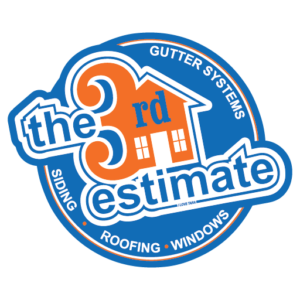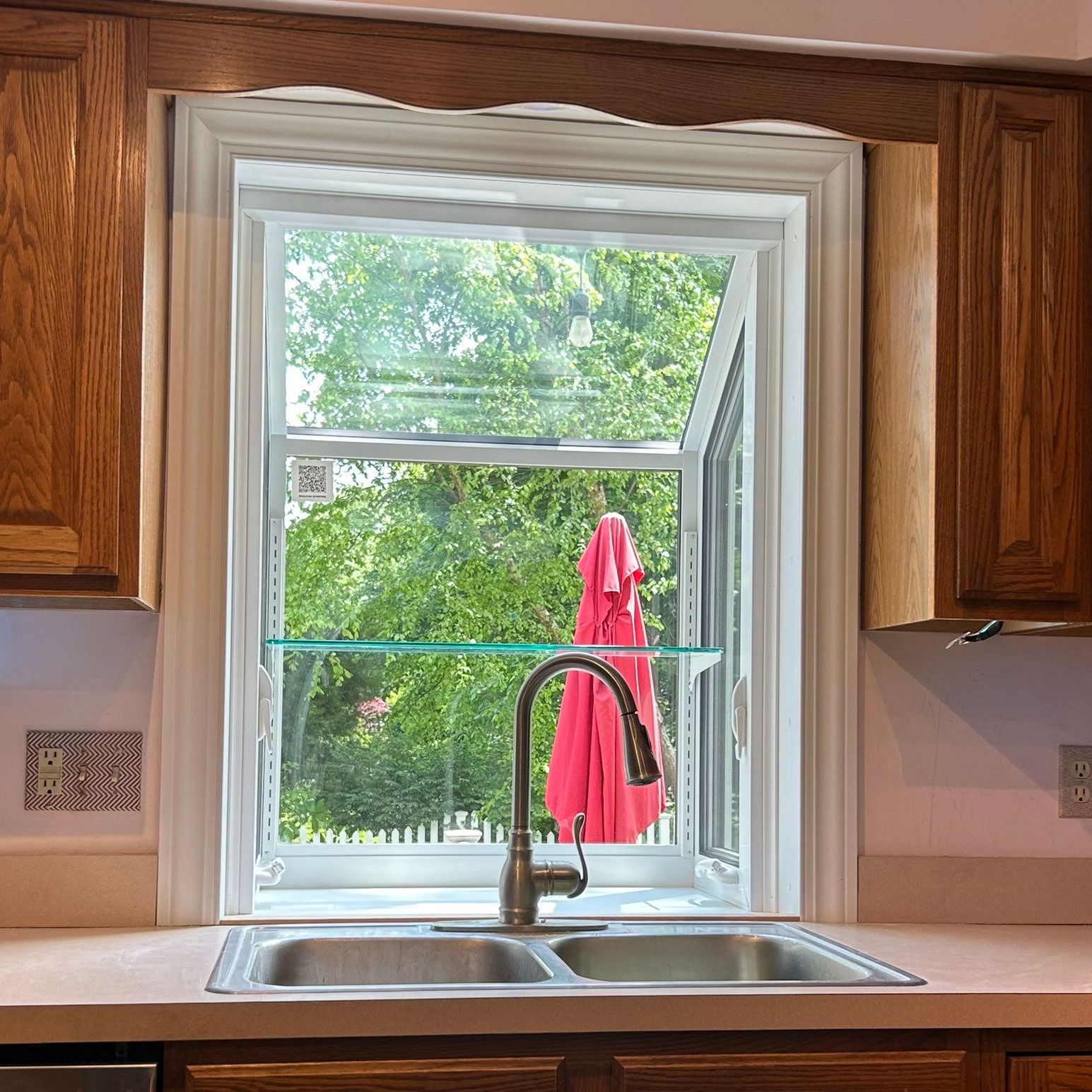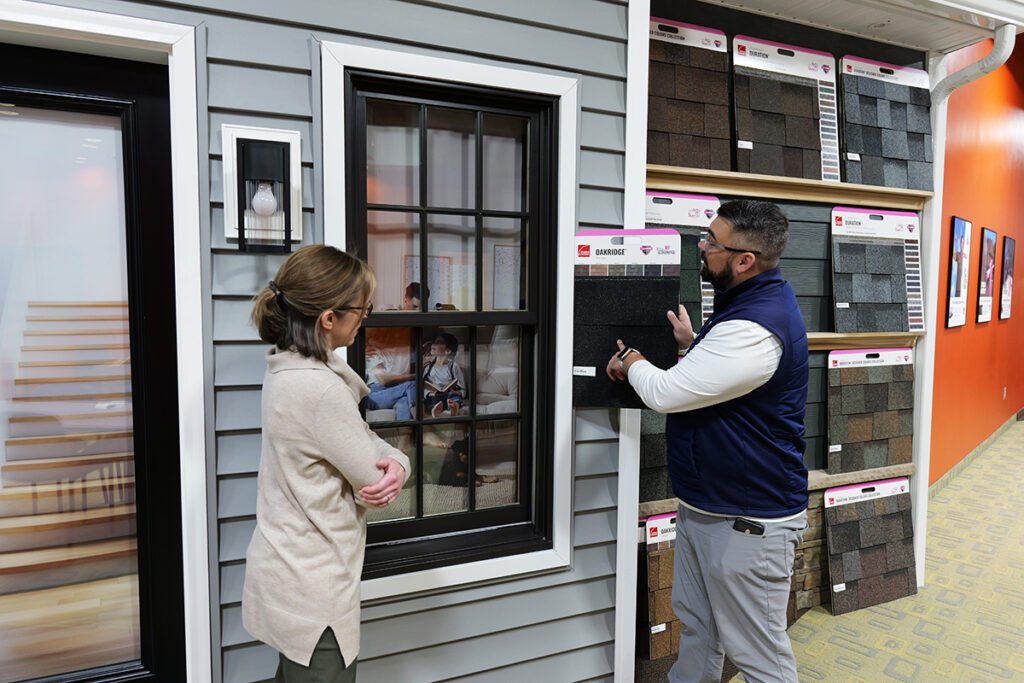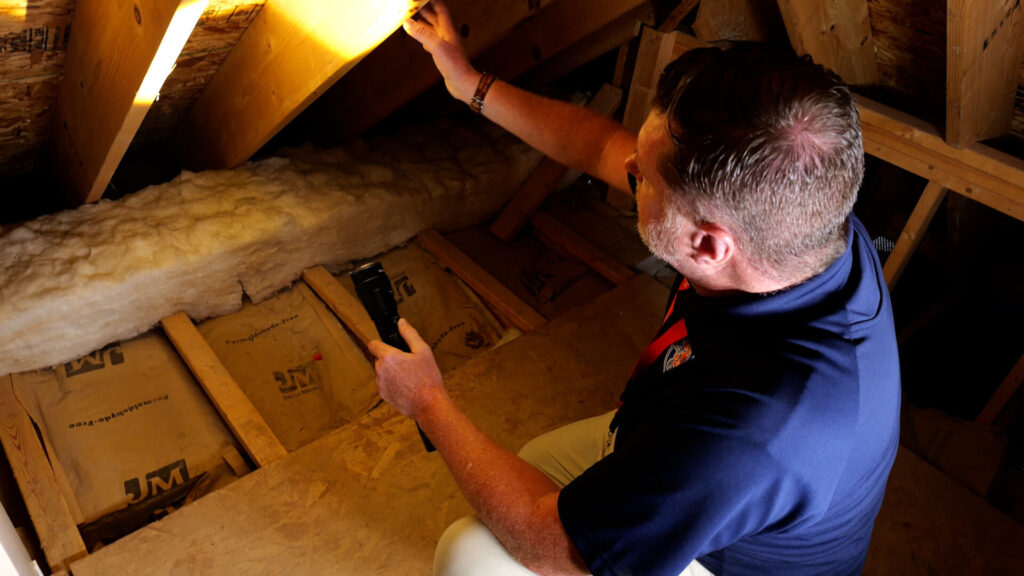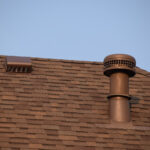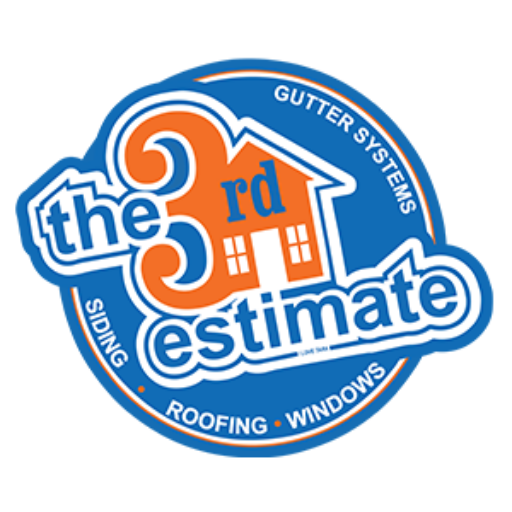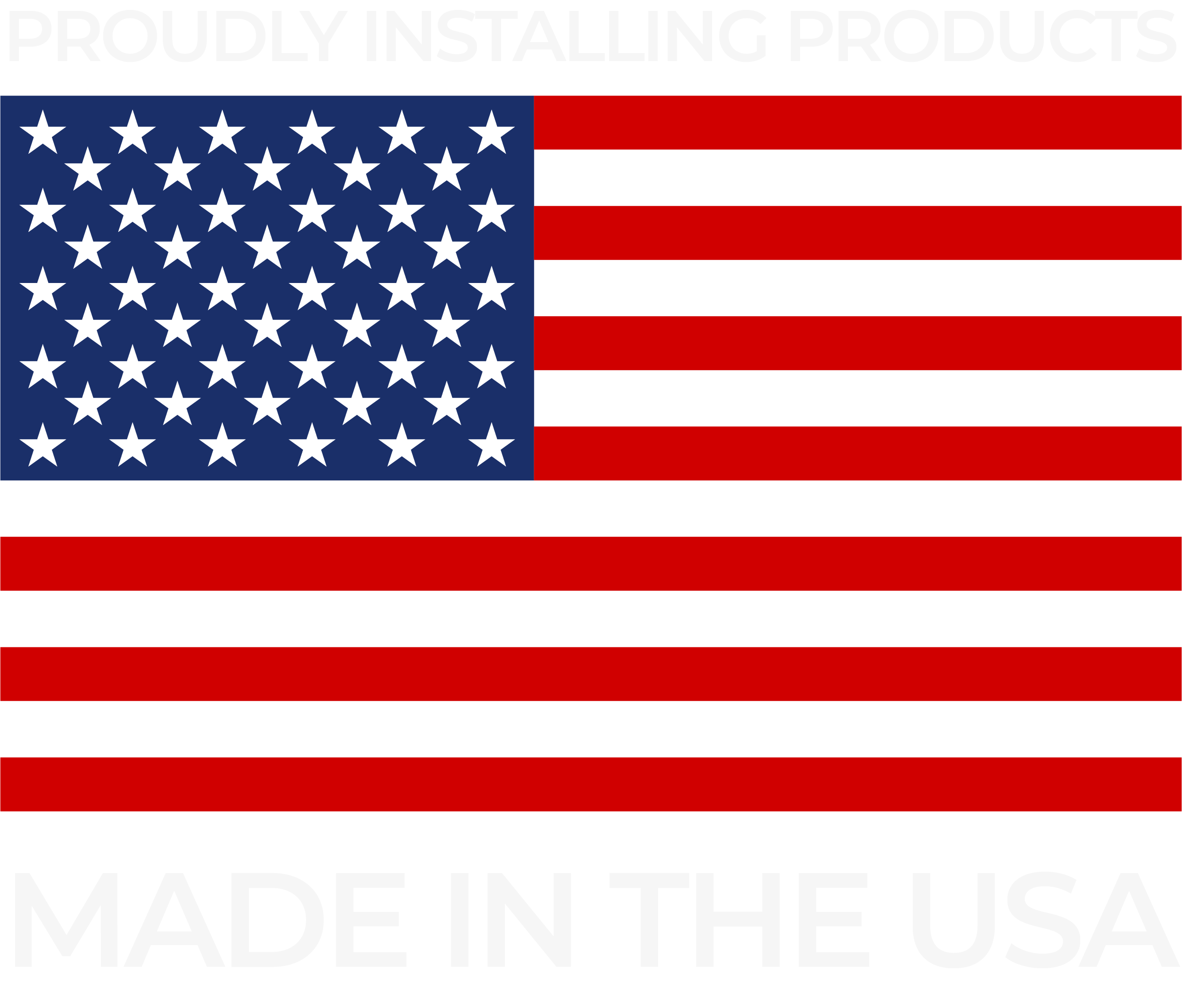Why Energy Efficiency in Windows Matters for Winter Comfort
With winter just around the corner here in Northeast Ohio, ensuring your home is energy-efficient can keep you warmer and help reduce those heating bills. Windows play a crucial role in maintaining this efficiency by keeping warmth inside while minimizing cold drafts. But how can you tell if your windows are up to the task? In this guide, we’ll break down the different ratings and features that determine a window’s energy efficiency, making it easier to choose the best options for your home.
Understanding Energy Efficiency Ratings for Windows
The energy rating label, often provided by organizations like the National Fenestration Rating Council (NFRC), summarizes a window’s performance through key metrics such as U-Factor, Solar Heat Gain Coefficient (SHGC), Visible Transmittance (VT), and Air Leakage (AL). Here’s what each of these metrics means for your comfort and energy savings.
- U-Factor: Your Winter Defense
- What It Measures: Heat loss rate
- Ideal Range: 0.20-0.30 for Northeast Ohio
- Why It Matters: With our cold winters, a lower U-Factor means better insulation and lower heating costs
- Pro Tip: For Cleveland-area homes, look for U-Factors below 0.30
- Solar Heat Gain Coefficient (SHGC)
- What It Measures: Solar heat blocked
- Ideal Range: 0.35-0.45 for our climate
- Why It Matters: Balanced SHGC helps manage both winter heating and summer cooling
- Seasonal Impact: Higher SHGC windows can help reduce winter heating costs
- Visible Transmittance (VT)
- What It Measures: Natural light passage
- Ideal Range: 0.40-0.70
- Why It Matters: Affects natural lighting and potential need for artificial lighting
- Balance Point: Consider higher VT for north-facing windows
- Air Leakage (AL)
- What It Measures: Draft prevention
- Ideal Range: 0.30 or lower
- Why It Matters: Crucial for withstanding Lake Erie winds
- Local Impact: Essential for Northeast Ohio’s varying air pressures
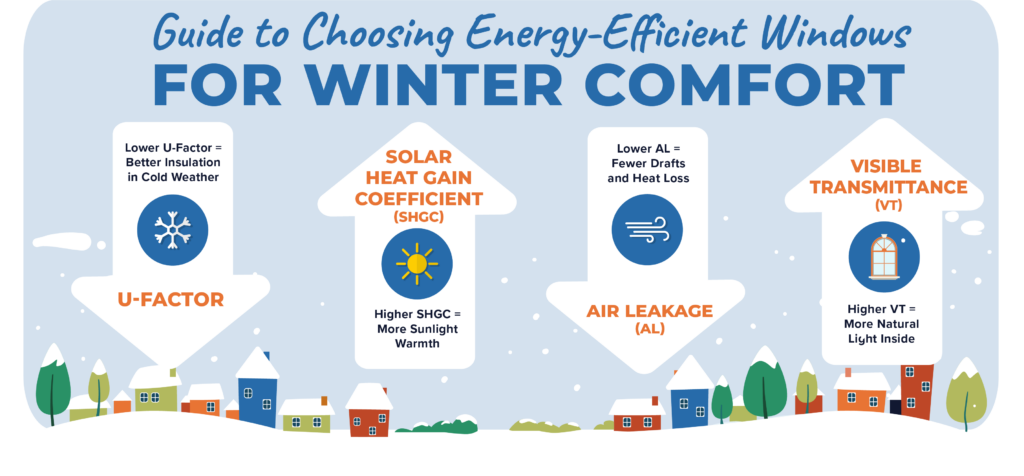
Additional Factors That Enhance Energy Efficiency
Beyond the energy rating label, other window features contribute to better insulation and comfort:
- Window Frame Material: Frame material affects insulation and durability. Vinyl and fiberglass frames tend to offer better energy efficiency by naturally providing insulation. These materials are especially valuable in cold climates, where every degree of warmth matters.
- Glazing and Glass Coatings: Double or triple glazing, combined with Low-E (low emissivity) coatings, can further improve a window’s energy performance. Low-E coatings reflect heat back into your home during the winter, while in the summer, they keep unwanted heat out.
- Gas Fills: High-performance windows often contain gas fills like argon or krypton between panes. These gases provide better insulation than air, helping to reduce the U-Factor.
- Window Design: Multi-pane designs add insulation layers that single-pane windows lack, making them a top choice for reducing heat loss in the winter.
Northeast Ohio Considerations: Why Energy-Efficient Windows Are a Smart Investment
Investing in energy-efficient windows does more than cut your heating bills; it creates a comfortable, consistent indoor environment. By reducing drafts and maintaining a stable indoor temperature, these windows reduce the strain on your heating system, which can extend the system’s lifespan. Plus, choosing energy-efficient options can also lower your carbon footprint, making a positive impact on the environment.
Benefits of Energy Efficient Windows
Financial Benefits
- Average 15-25% reduction in energy bills
- Potential tax credits and rebates
- Increased home value
- Reduced HVAC wear
Comfort Improvements
- Consistent room temperatures
- Reduced drafts
- Less condensation
- Better sound insulation
Frequently Asked Questions
What are energy-efficient windows?
Energy-efficient windows are designed to prevent heat loss in winter and reduce heat gain in summer, keeping your home comfortable and lowering energy bills. They typically have special glazing, coatings, and gas fills that improve insulation and light control.
How can I tell if a window is energy efficient?
Look for the NFRC energy rating label. Key metrics like U-Factor, Solar Heat Gain Coefficient (SHGC), Visible Transmittance (VT), and Air Leakage (AL) indicate the window’s energy performance. Lower U-Factors and AL values mean better insulation, while SHGC and VT depend on climate needs.
What is a good U-Factor for windows in a cold climate like Northeast Ohio?
For colder climates like Northeast Ohio, a U-Factor of 0.30 or lower is typically recommended to maximize insulation and keep your home warm during winter.
What does Low-E glass mean?
Low-E (low emissivity) glass has a special coating that reflects heat. It keeps warmth inside during winter and blocks unwanted heat from entering during summer, improving energy efficiency year-round.
How do gas fills between window panes help with energy efficiency?
Gas fills, like argon or krypton, are placed between panes of glass to reduce heat transfer. These gases are denser than air, providing better insulation and lowering the window’s U-Factor.
Is double glazing or triple glazing better for energy efficiency?
Triple glazing offers better insulation than double glazing because of the extra pane and additional gas fill. However, it’s usually more expensive. In extremely cold climates, triple glazing is beneficial, but in moderate climates, double glazing may provide sufficient insulation at a lower cost.
What frame material is best for energy efficiency?
Vinyl and fiberglass frames generally offer the best insulation. They are low-maintenance and don’t conduct heat as readily as aluminum, making them ideal for improving energy efficiency in both hot and cold climates.
Can energy-efficient windows help reduce noise?
Yes, multi-pane energy-efficient windows with gas fills and well-sealed frames can reduce noise transmission, making your home quieter as well as more comfortable.
How much can energy-efficient windows reduce my heating bills?
Depending on your climate and the type of windows you replace, energy-efficient windows can save up to 10–30% on heating and cooling costs. In colder climates, the savings may be even higher during winter months.
Are there energy tax credits or incentives for installing energy-efficient windows?
Many states and local governments offer rebates, tax credits, or incentives for energy-efficient home upgrades, including windows. Be sure to check with your local utility or government office to see if you qualify.
Is it worth replacing all windows at once?
Replacing all windows at once can provide uniform insulation and performance, leading to maximum energy savings and improved aesthetics. However, if budget is a concern, you can replace the windows in stages, starting with those in the most-used or least-insulated rooms.
How do I maintain energy-efficient windows?
Regularly check and clean window seals, frames, and glass to maintain efficiency. Avoid using harsh chemicals on Low-E glass coatings, and inspect frames for any damage to prevent air leakage.
Making Your Decision
Choosing energy efficient windows is an investment in your home’s comfort and value. By understanding these ratings and considering our unique Northeast Ohio climate, you can make an informed decision that benefits your home for decades to come.
Need help selecting the right energy efficient windows for your home? Contact The Third Estimate for a free consultation. Our experts understand Northeast Ohio’s specific challenges and can help you choose the perfect windows for your needs.
Ready to Upgrade Your Windows?
Contact The Third Estimate today for a free consultation and estimate. Serving Northeast Ohio communities since 1996.
